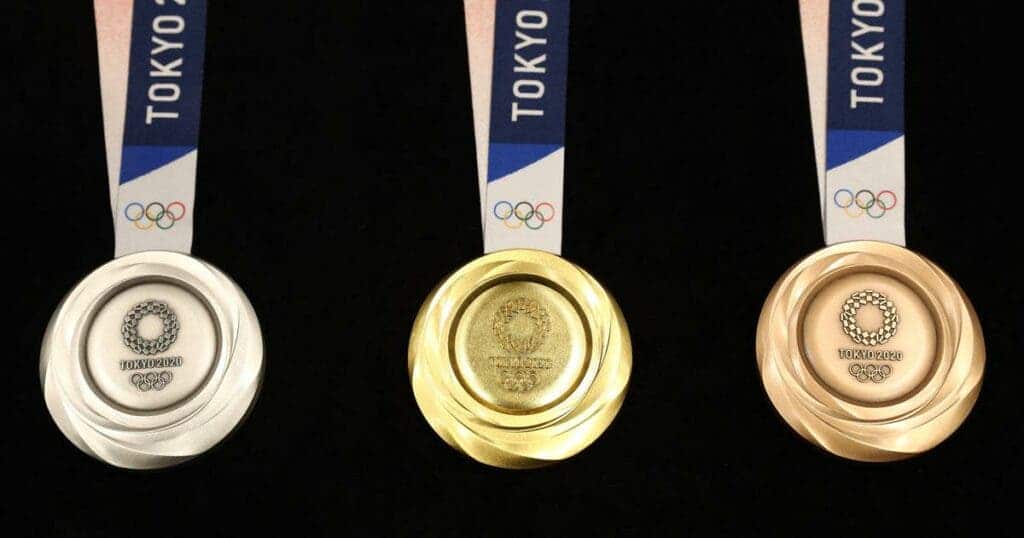Medalists at the Tokyo Olympic Games are the first ones in the history of the competition to win medals made out of recycled electrical goods — mostly, mobile phones.
These highly desired prizes were crafted from more than six million reused mobile phone parts, part of an effort by organizers to make this year’s competition environmentally friendly.

Two years before the Olympics, the organizing committee launched the “Tokyo Medal Project” to recycle old electronic gadgets such as smartphones and laptops, which would later be used to produce the medals. Billions of precious metals such as gold and silver, which are used in electronic devices, get discarded every year globally — and Tokyo wanted to do something about it.
There was a large-scale, national effort in Japan to collect enough recycled material to produce about 5,000 bronze, silver and gold medals for the Olympics. Up to 90% of Japanese cities, towns, and villages participated by setting up donation pick-up sites where hundreds of thousands of Japanese citizens donated their old electronic devices. It was a massive effort to engage the national government, municipalities, companies, schools and other local communities.
When the project was launched in 2017, there were 600 municipalities on board. By the end in 2019, there were more than 1,600, following a public relations campaign. Collections points were set for people to contribute with electronics. They were later dismantled to extract and refine the medals necessary to produce the medals.
The recycling campaign produced 70 pounds (32 kilograms) of gold, 7,700 pounds of silver, and 4,850 pounds of bronze — all from nearly 80 tons of small electrical devices such as old phones and laptops. The gold alone is worth some $2 million.
The design for the medals shows the Olympic emblem on the front and the Greek goddess of victory at the back. The gold medals are made from pure silver plated with about six grams of gold, while the silver ones are made from pure silver and the bronze ones from gunmetal. The side of each medal is inscribed with the name of the event.
While the Japanese were the first ones to have made medals fully from recycled material, the concept isn’t new. In the Rio 2016 Olympic Games, 30% of the silver to make the gold and silver medals was obtained from recycled materials. Looking ahead to the Paris Games in 2024, the Tokyo Medal Project might have set a precedent.
A broader sustainability effort
The organizers of the Tokyo Olympics aimed to create a “minimal impact games,” though a series of steps outlined in the Tokyo 2020 Olympic and Paralympic Games Sustainability Plan. The games are aiming to move “towards zero carbon” by focusing on “maximum energy savings and use of renewable energy,” the plan reads.
Most of the venues that are hosting events already existed, with several reused from the Tokyo 1964 Olympics — much of the Olympics-associated emissions come from building new infrastructure. Meanwhile, the Olympic torches, designed by Tokujin Yoshioka, were made up of recycled construction waste from temporary housing used in the aftermath of the Great East Japan earthquake and tsunami in 2011.
The vehicle that transports Olympic and Paralympic athletes around the Olympic Village is an autonomous and electric car from Japanese company Toyota, the e-Palette. The athletes also sleep in lightweight recycled cardboard beds made by the Japanese company Airweave. The mattresses can then be recycled after being used.
Yuki Arata, the Tokyo Games director of sustainability, said in a statement: “We hope that the approach we are taking for these Olympics, for example utilising timber to make benches for public facilities for local areas will remain in (people’s) minds as a good memory of these Olympics to be passed on to the next generation.”


